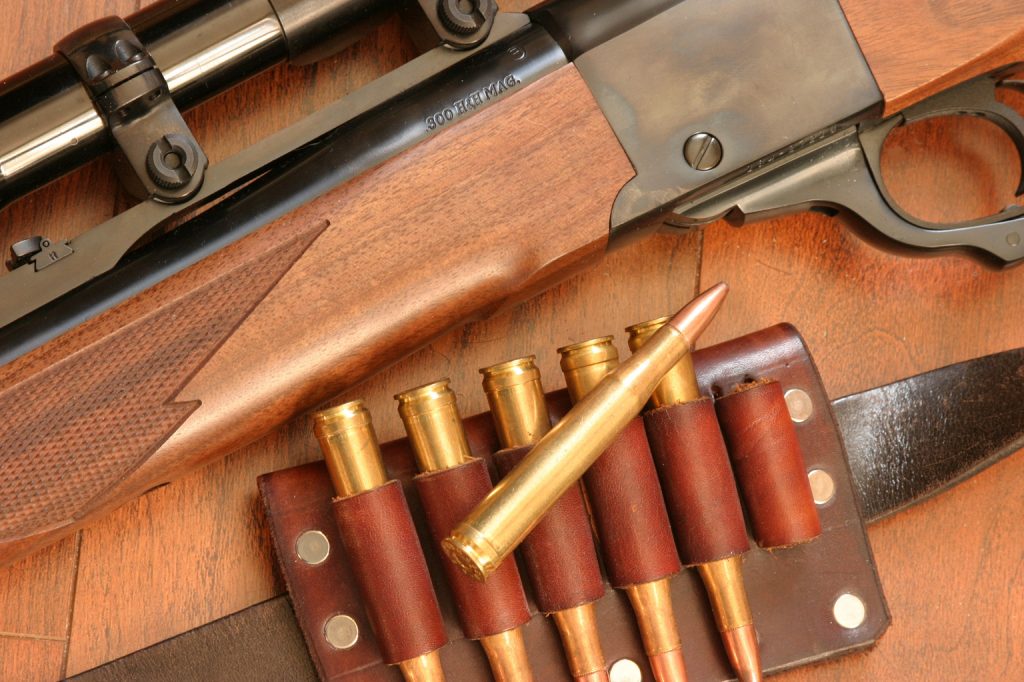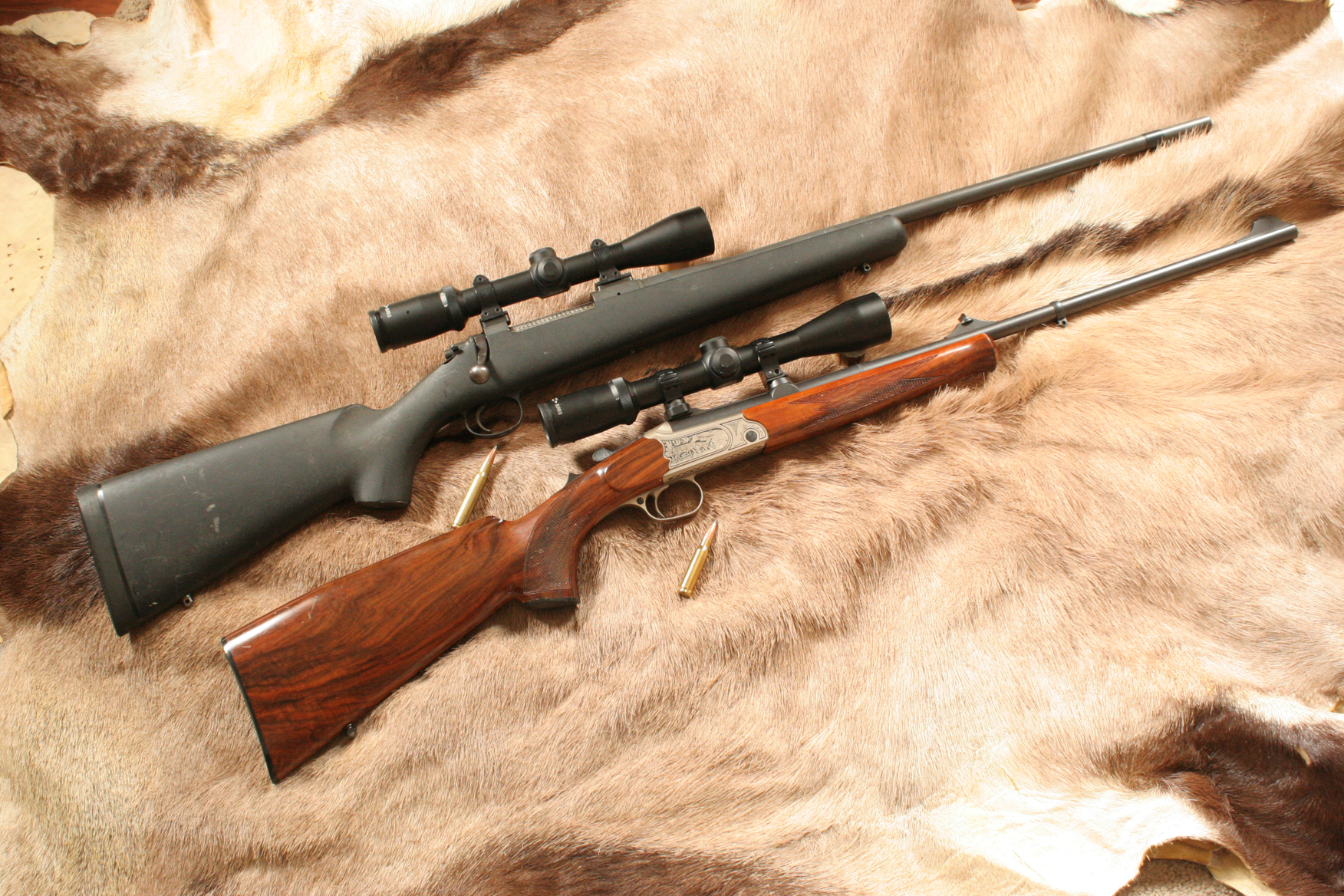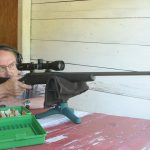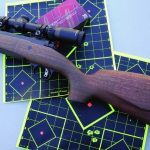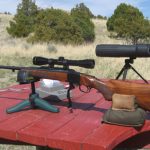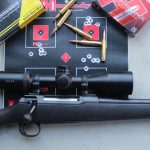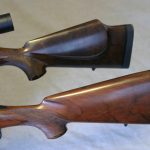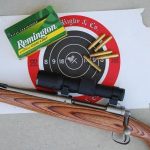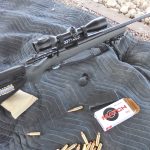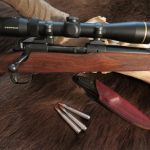Old traditions vie with new trends in the world of big-game cartridges.
Because hunting involves so many traditions, many hunters, especially those of a certain age, tend to avoid “trendy” rifles and cartridges. Many hunters older than fifty prefer wood-stocked rifles—which seems appropriate not only because rifles normally had wood stocks during the first 400-plus years of their existence, but also because of Woodstock, the 1969 music festival that, for better or worse, partly defined the generation the now includes older American hunters.
This doesn’t mean the generations split neatly. As an example, I’m at the younger end of the Woodstock generation, but along with plenty of hunting rifles with wood stocks, a third of my collection has synthetic stocks, and barrels chambered for trendy twenty-first-century cartridges.
However, some of my similar-age friends would never consider a cartridge born after Woodstock. One really likes the 7×57 Mauser, mentioning his affection so often some of his other friends suggest he was around when it appeared in 1892. He claims to like the “panache” of the 7×57, a word some hunters of his generation use when bragging up their antique choices.
However, if they actually knew the specific history of the word, they might not. According to the dictionary, panache originally meant a “tuft or plume of feathers, often worn as a headdress, or on a helmet.”
The same dictionary lists panache’s modern meaning as “flamboyant confidence of style or manner,” as in “he entertained in Palm Springs with great panache.” But my friend doesn’t connect the 7×57 with feathered headdresses or Palm Springs parties. Instead he believes the 7×57 imbues him with confident style, perhaps inherited from famous 7×57 fans James Corbett and W.D.M. Bell.
Like other hunters who obsess over such things, he scorns the 7mm-08 Remington, a post-Woodstock cartridge duplicating the ballistic performance of the 7×57. He points out there’s no point to the 7mm-08, since the 7×57 has been doing the same things far longer. Why use a panache-free imitation?
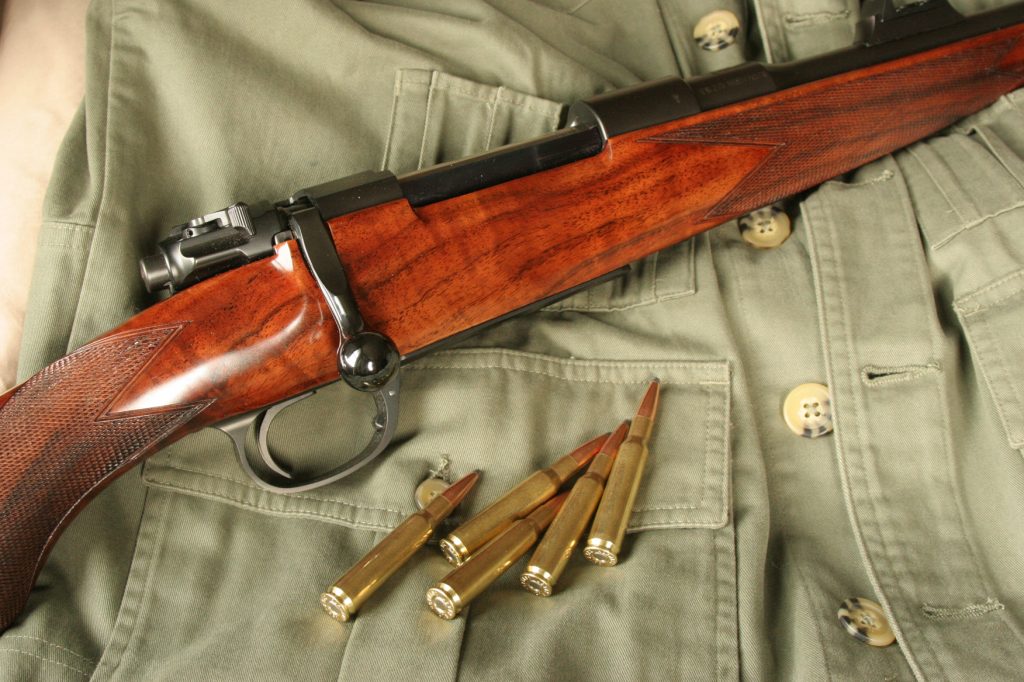
I’ve also used the 7×57 in places from Alaska to Africa, taking fifteen species of big game with it including caribou, elk, moose, kudu, wildebeest, and one of my two biggest-bodied mule deer, an Alberta buck. Yet the 7×57 never gets mentioned as a good choice for hunting big Alberta mule deer, whether by Internet experts or Alberta outfitters. Instead suggestions usually start with belted magnums, due to the size of Canadian bucks and possible longer shots on the high plains. (My buck fell at just under 300 yards.)
Lately, however, I’ve grown fonder of the 7mm-08, even though its ballistics are indeed exactly the same. Why? First, because it’s easier to buy brass for handloading in a wide variety of brands. Second, and perhaps more important for a traveling hunter, any 7mm-08 factory ammo works similarly in any 7mm-08. This is not true of the 7×57.
Like many early smokeless cartridges, the 7×57 originated as a military round, and like all early smokeless military rounds, it featured long, heavy, round-nose bullets. Consequently, the original chamber throat was very long. Later on, lighter spitzers became popular, and 7×57 chamber throats shrank (as they did in many other cartridges of the same era).
Even modern factory rifles can have throats varying from short to very long. I know this because I’ve owned American factory 7x57s with throats varying in length from .375 inch, the industry standard listed by the Sporting Arms and Ammunition Manufacturer’s Institute, to so long the case neck barely grasped the rear end of a 160-grain spitzer seated near the lands. And the 160-grainer had to be seated near the lands, or the rifle wouldn’t shoot worth a hoot.
Because of this wide variation, 7×57 handloading data also varies widely, whether developed for older or “modern” rifles. Factory ammunition also varies (when you can find it), whether American or European, so you can’t always be sure it will work well in a particular rifle. Oh, and then there’s the 7x57R, a rimmed variation for break-action rifles, generally loaded to lower pressures than the rimless 7×57. The same things are often true of other cartridges that appeared until around 1905, including the 6.5×55 Norwegian-Swedish, another highly revered classic.
Perhaps the most varied is the 7×57’s big brother, the cartridge generally known today as the 8×57 Mauser. The original cartridge was not chambered in a Mauser rifle, but in the Gewehr 1888 military rifle designed by a committee. It used a 227-grain round-nose bullet, .318 inch in diameter, so Gewehr 1888s had long chamber throats.
After several years, the rifling grooves were deepened to .323 inch, for reasons involving pressures and barrel wear, and bullet diameter increased to match. In 1898 Germany adopted the Gewehr 98 Mauser, but in 1903 switched the bullet to a 154-grain spitzer, requiring a shorter throat, calling the “new” version the 7.92x57mm Mauser S Patrone. Most of the existing 98s had their barrels set back and rechambered—as did many Gewehr 1888s, especially a bunch Germany sent to its ally, Turkey, in World War I.
The 8×57 became a popular hunting round both in Europe and Germany’s colonies, and of course a rimmed version soon appeared. For some obscure reason most early break-actions for the rimmed 8×57, whether single-shots, doubles, or drillings, had .318-groove barrels, but eventually some appeared with .323 grooves.
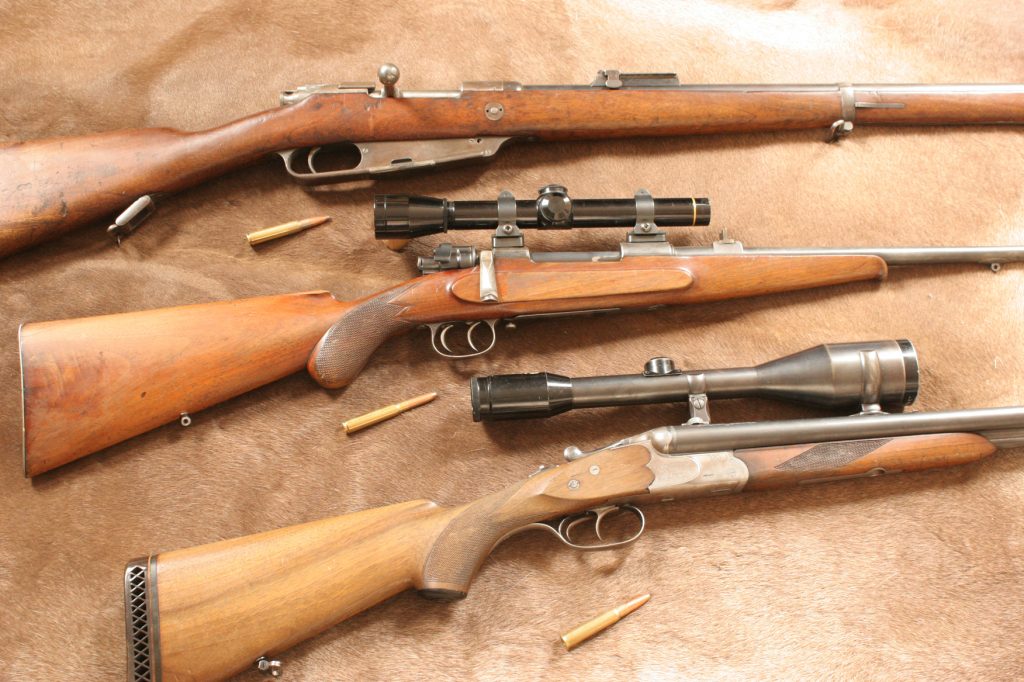
These various 8x57s all had different names, often confusing Americans despite the supposedly “sensible” metric-cartridge nomenclature system. The .318 version is known today as the 8x57I or 8x57J. The “I” stands for infanterie, German for infantry, but in old German writing it looked a lot like a J—so both letters mean the same thing. The .323 round was called the “S” version, which was added to the I or J. The rimmed versions have an R at the end of the rest of their alphabet.
For even more obscure reasons, I’ve owned 8x57s chambered for most of the variations, including a Gewehr 1888 (which may have traveled to Turkey during its life, since there’s an “S” stamped on the receiver), an 1898 military rifle rechambered for the spitzer load, a Sauer drilling in the .323-groove version of the rimmed round, and a century-old German custom rifle that’s essentially a “sporterized” 98 military rifle with the original long chamber throat.
While European hunters normally know about these variations and their names, I suspect the younger generation grew weary of them. Having hunted in various European countries for over a quarter-century, with a bunch of different resident hunters, I’ve only encountered a single 8×57 rifle.
Surprisingly, the single most common cartridge I’ve encountered has been the .308 Winchester. This may seem odd, but after the American military adopted the .308 in the 1950s, the North Atlantic Treaty Organization (NATO) eventually adopted it as well. As a result the 7.62×51 NATO and the .308 soon became more common than the 8×57—and did not have four significant variations. In a 1996 hunt in Norway (one of the original NATO nations) I came across a barrel full of Remington .308s in a sporting goods store in Bergen, and on two other hunts, both hosted by European rifle manufacturers, I was assigned a .308 Winchester, one an over-under double. While some Americans still refer to the 8×57 as the .30-06 of Europe, it’s not.
In one instance where practicality overcame my traditional tendencies, I purchased a German single-shot, known over there as a Kipplauf (tip-up), specifically for traveling. Like double-barrel rifles and shotguns, Kipplaufs easily break down into three shorter parts: barrel, fore-end, and action/buttstock. These fit easily into a compact travel case, handy in airports and planes of varying sizes, and other vehicles from jetboats to Toyota Land Cruisers, often almost filled with camp supplies. It came from a lineup of Merkel Kipplaufs in the Houston showroom of Briley Manufacturing, which included several chamberings—including a 7x57R.
But I resisted the temptation and picked the .308, knowing ammo could be found anywhere from Alaska to Africa—and that the .308 worked great on a wide variety of big game, even with cup-and-core bullets, due to its moderate muzzle velocities. In fact, it works just as well as the 7×57, which acquired its sterling reputation when only cup-and-cores existed, whether softnoses with the open end of the cup forward, or “solids” with the open end backward. (Oh, and my Kipplauf extracts very reliably, despite the .308 being a “rimless” case.)
Fortunately, another early military cartridge which got changed from a heavy round-nose to a lighter spitzer never suffered. The first rounds for the 1903 Springfield were loaded with the same 220-grain roundnose used in the .30-40 Krag, but shortly afterward Mauser changed the 8×57 military load to the lighter spitzer. The U.S. Army then switched to a 152-grain spitzer, converting Springfields by setting the barrels back and rechambering them with a shorter throat. This happened relatively quickly, so very few .30-03s still exist. Consequently, all .30-06 ammo works in all .30-06 rifles.
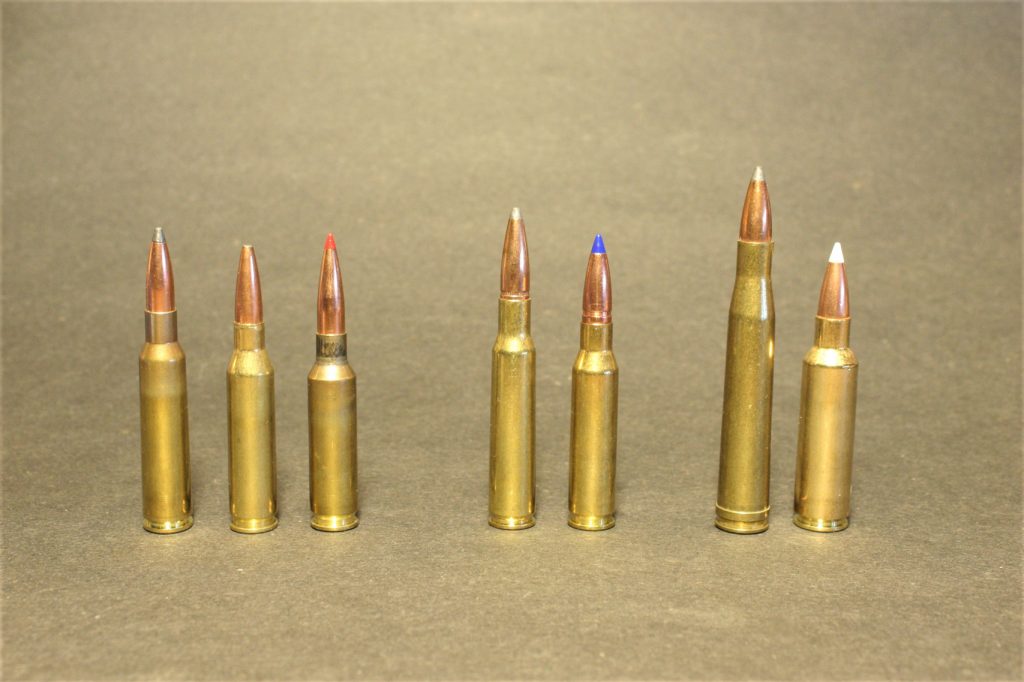
The .30-06’s celebrity career almost matches the 7×57’s, being a favorite of various writer-hunters, including Theodore Roosevelt, who took a converted sporter on his nearly year-long African safari in 1909-10. His “little Springfield” worked so well that Springfield sporters became a national industry, made not only by custom gunsmiths but Springfield Armory. Ernest Hemingway wrote about his Griffin & Howe Springfield many times, most notably in Green Hills of Africa, using it to taking a rhinoceros, among many other animals. A Remington .30-06 was among the four-rifle battery Robert Ruark used in the same Kenya and Tanganyika country Hemingway hunted, and probably the rifle he used most. Ruark eventually gave it to his professional hunter, Harry Selby, who used it far more.
A long list of professional gun and hunting writers have used and often recommended the .30-06 to readers, starting with Townsend Whelen (“the .30-06 is never a mistake”), Capt. Paul Curtis, the shooting columnist for Field & Stream before World War II, as well as Jack O’Connor and Craig Boddington. I have used it take more big-game animals than any other round, and in fact at one point owned six .30-06s, all in different actions—bolt, lever, pump, semiauto, falling-block single-shot, and a drilling. Eventually, however, this collection got pared down to a single New Ultra Light Arms Model 24, the polar opposite of the Merkel .308.
But no matter how good or practical it is, eventually many rifle loonies become bored with the .30-06, apparently because despite its illustrious history, the cartridge lacks panache. Today, many dance around the .30-06’s ballistic slot with modern rounds such as the .280 Remington Ackley Improved and .338 Federal, both providing very similar muzzle velocities with similar bullet weights. Ruger even devised a “short” .30-06, the .300 Ruger Compact Magnum. Despite all this, “boring” .30-06s keep selling. (Apparently this makes .30-06 users boring, too. Around twenty years ago in a caribou camp, one of the other hunters asked what caliber my rifle was. When I said .30-06, he said, “I kinda figured you for a .30-06 guy.”)
Another cartridge developed shortly after the .30-06, Holland & Holland’s .375 Magnum, still holds the title of the greatest all-round big-game cartridge, despite being terribly flawed, according to many modern hunters. It not only features one of those antique belts, but the long, tapered case prevents the H&H from being as “efficient” as newer rounds.
Yet the original keeps going. Rob Klemp, one of my African PH friends, owns a big sporting goods store in Kimberley, South Africa. I sometimes consult him about sporting rifle trends over there, and a few years ago Rob said the .375 H&H remains the leader among “medium bores,” because his customers tend to be traditional. Yet a year or two later he reported that 80 percent of his new-rifle sales were 6.5 Creedmoors, the cartridge many American hunters love to hate. (Other African firearms dealers, and not just in South Africa, have reported the same trend, which means safari hunters don’t necessarily need to take cartridges over a century old to be practical. Even if they run out of 6.5 Creedmoor ammo, they can easily buy more.)
In fact, the modern, shorter cartridges have pushed some traditional favorites to the brink of extinction. The 6.5×55 has largely been replaced not by one but two rounds, the .260 Remington and 6.5 Creedmoor, because unlike 6.5x55s, the recent rounds have consistent chamber throats. (This may be why I’ve kept things balanced in my gun safe by with two 6.5x55s, along with one rifle each in .260 and 6.5 Creedmoor.)
As with the 7×57 and 7mm-08, far more of today’s hunters buy .300 Winchester Short Magnums than .300 H&Hs, the century-old ,belted, “inefficient” .300 magnum with just about the same powder capacity and ballistics. In 2007, only five years after the .300 WSM appeared, Rob Klemp had more WSM ammo in stock than H&H. The debate over what’s traditional and what’s more practical isn’t likely to end any time soon.
